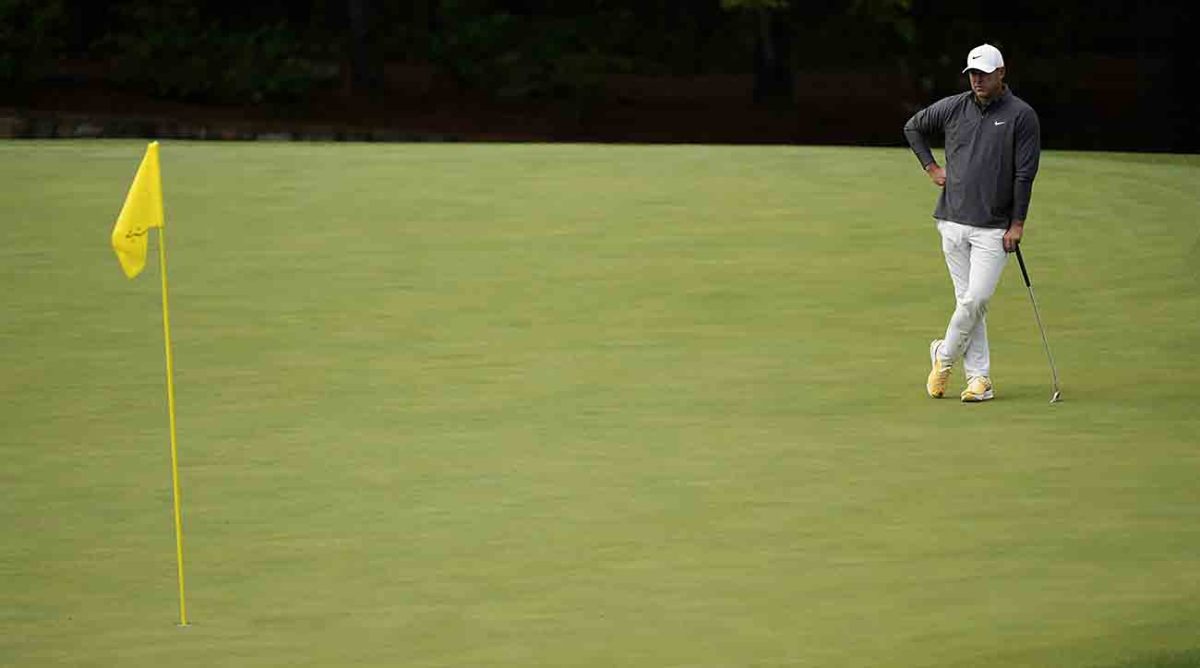The LIV Factor Makes the Majors Juicier, Just Don’t Expect to Hear About It During Play

Even when he was winning four major championships in 23 months, Brooks Koepka never so much as contended in a popularity contest—an oddity for a U.S.-born golfer whose stunning success seemed to catch everyone off guard. Of course, Koepka’s middle-finger mentality and reluctance to play nice with others contributed heavily to this tepid public reaction. He was an outlaw who favored attitude over gratitude.
It almost goes without saying that none of this background was addressed during CBS’s coverage of the Masters earlier this month, when Koepka took a four-stroke lead into the resumption of play Sunday morning, still led by two after 54 holes, then faltered with a 75 to finish four shots behind Jon Rahm. If such an omission was predictable, however, others were intellectually deceiving. Not once did the network mention Koepka’s leap to LIV Golf last June. His triumph at the league’s third 2023 event the previous Sunday, which made him the only multiple winner on the fledgling circuit, was referred to simply as “in Orlando.”

The T2 at Augusta National left Koepka sharing runner-up status with Phil Mickelson, one stroke better than Patrick Reed. That’s three PGA Tour defectors in the top six, a fact CBS had to go out of its way to ignore in the closing moments of the telecast—an inexcusable “oversight” given all the pretournament speculation as to how LIV players would fare at the Masters.
Pretty well, as it turns out. Well enough to trigger intense rooting interest among the millions watching at home, a considerable majority of whom were surely pulling for the loyal Spaniard to beat the Americans who jumped ship.
Such sentiment would have been unfathomable in bygone days, when foreigners were winning nine of 13 Masters (1988–2000) and Europe was establishing competitive dominance at the Ryder Cup. If that was then, this is now. The LIV invasion has led to reconfigured battle lines, clearly separating heroes from villains while influencing partisanship beyond its nationalistic tendencies. Rahm becomes the people’s choice, heralded as a terrific player with an uncompromised appreciation for all the rewards pro golf’s incumbent tour has given him. The same could be said of Rory McIlroy, whose vocal denouncement of an Arab-funded threat to the game’s status quo has elevated him to a leader with principle. A man who deserved all the applause.
None of that explains the lack of journalistic etiquette CBS chose to impart on the 87th Masters. Its aversion to identifying the rebel faction as “LIV Golf” on the air (or acknowledge it in any context) may have originated from Augusta National itself. Chairman Fred Ridley made it clear the club’s mission was to “keep the focus on the competition” throughout the week, which is why LIV CEO Greg Norman wasn’t invited to attend the year’s first major.
The network isn’t about to challenge any request from the host of a tournament it has televised since 1956. Especially when it coincides with the sensibilities of the PGA Tour, with whom CBS has also enjoyed a long and prosperous partnership. Television is a business dependent on cooperation first, compatibility second and journalistic integrity seventh or eighth. If 99.9% of all viewers failed to notice the snub, more than half of them likely would have condoned it.
And so we move on … to next month’s PGA Championship, another longtime CBS property (since 1991) and one with an interesting recent history. Koepka won the 2018 gathering—the final PGA held in August—then defended his title nine months later at Bethpage. Mickelson became the oldest player ever to win a major with his victory at Kiawah Island in ’21, a performance similar to his recent showing at the Masters in that it came from 40 miles beyond Nowhere.
The presence of both men will receive ample attention at Oak Hill. Koepka has provided sufficient evidence he has overcome the physical ailments and confidence problems that plagued him during his final two seasons on the PGA Tour. Considering his recent form and Koepka’s reputation as a big-game specialist, SI Sportsbook has posted 20-to-1 odds on him claiming the Wanamaker Trophy for a third time. Only three players are bigger favorites.
Mickelson, meanwhile, was an extreme long shot heading into the 2021 PGA, teeing off at a price of about 300-to-1. He’ll arrive at Oak Hill in the 150-to-1 neighborhood, his massive popularity reduced to a fraction of what it was two years ago. If Lefty’s career began to unravel during the blurry period shortly before his alignment with LIV Golf, Koepka seemed to embrace his unloved identity long before he took the plunge. He poked fun at other players, offered conflicting updates on his injuries, played the antagonist in his goofy feud with Bryson DeChambeau and publicly implied he had no interest in joining the Saudi league.
Once again, Koepka proved himself wrong, but for all those who bid good riddance to the guys who took the money and ran, their departures have made the majors only more intriguing. Thicker plots, deeper emotions, stronger reactions. Three things championship golf can’t get enough of, regardless of what you don’t hear on TV.
